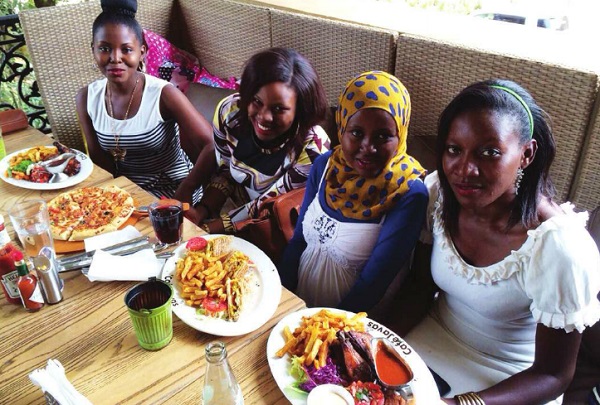As more Ugandans resort to fried snack foods, experts warn of the danger ahead

In a queue at a fast food restaurant, two girls are chatting. “I’ve eaten a lot of chaps recently. I need a change today, how are their chips?” One asks her friend. “They are tasty and quite a lot. They sell at only Shs4,000,” she responds.
The girls seem to be daily customers at Antonio’s Restaurant on Kampala Rd. Since the restaurant opened an extension to cater for ‘take away’ customers, there’s competition for space with pedestrians. You definitely won’t go hungry here as there are more than 10 different foods ranging from chapatis to burgers and pizzas. It takes only a matter of minutes to be served especially if you go before their peak hour of 7 pm when hordes of people begin lining up for fast snacks.
Such foods are increasingly becoming Ugandans’ favorite with many choosing them as their daily meals. For instance, at cafesserie, pizzas are one of their best selling foods. When The Independent visited on a Friday evening at around 7:30 pm, one customer – Mariam Mbaziira was feasting on a pizza along with a bottle of coke. By that time, the place was already flooding with children some in school uniform, corporate employees and foreigners.
Cafesserie located onAcacia Mall in an uptown area of Kololo opened up two years ago. On the same mall is an American franchise Kentucky Fried Chicken (KFC), which is best known for offering bucketfuls of fried chicken. Across the road fromAcacia is Café Javas, a relatively middle class restaurant that offers almost similar services – fast foods. About 900 meters away from the mall is Kamwokya center, an area for low-end dwellers. Here, by 7pm, women with big pans are already lined up along the road frying all kinds of meats and chips, up for grabs for as low as Shs 1,000.
Actually, there is a fast food for everyone now as sausages, ‘rolex,’ which is a chapatti rolled around fried eggs, chaps and kebabs are many people’s favorite bites.
Fast food business is booming in the city. Robert Kalumba, the deputy spokesperson of Kampala City Council Authority (KCCA), says they have licensed at least 1,014 restaurants though he also acknowledges that there are many others operating without a license.
Innovations to increase accessibility are also coming up. For instance apart from drive troughs where one can grab a bite without leaving the car, others can order on-line and the food will find them at their office or home. Ron Kawamara, the managing director of Hello Foods, a mobile and on-line food ordering platform, says Ugandans are curious people good at trying out new technologies but also places and cuisines.
Senior Nutritionist Dr. Jacent Asiimwe says food is taken for granted that not many people think deeply about what they eat. Then they become over weight and eventually obese.Currently, 16% of the women and 4% of the men in Uganda are obese.
He says they handle more than a hundred fast food orders on a daily basis with most of these being pizzas, followed by burgers and fried chicken. Answering why fast foods are their best sale, he says, “Its different how people order on-line and how they eat at home. They want us to deliver food that they can’t easily make at home.”
But, to Agnes Kirabo, the executive director of Food Rights Alliance (FRA), an organization focusing on food security and nutrition, the influx of such fast food chains and other low end joints in Uganda reflects negative changing trends in the country.
“You know a country’s diet is more revealing than even its literature. These dietary changes say a lot about our society. It actually shows how ignorant Ugandans are about nutrition,” she says wondering why people are embracing fast foods when developed countries like the United States are struggling to curb the menace.
Saying that food advocates like her are now shifting attention from ensuring that people in rural areas have access to food to ensuring that they eat the right foods, Kirabo adds that the elite are now mixing ‘class’ with misinformation as most of these foods are advertised as being ‘classy.’ “Rural dwellers have a problem of access but we have a group that has what it takes to access good food but don’t know what they should access,” she adds.
 The Independent Uganda: You get the Truth we Pay the Price
The Independent Uganda: You get the Truth we Pay the Price



